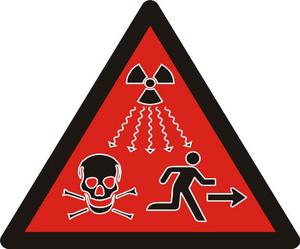
The effect of radiation is not a subject I blog on a great deal, although it is a subject I have studied a great deal. Indeed, my uncle, a former nuclear physics professor at MIT, started our family Radon testing business, which was sold off years ago.
I asserted that people should be worried about low doses of radiation, especially cumulatively over time. Charles Barton of The Nuclear Green Revolution commented, “Your low doses over time assertion has been repeatedly falsified by empirical studies.” Quite the reverse is true. As the National Research Council’s Committee to Assess Health Risks from Exposure to Low Levels of Ionizing Radiation (!) reported definitively three years ago:
A preponderance of scientific evidence shows that even low doses of ionizing radiation, such as gamma rays and X-rays, are likely to pose some risk of adverse health effects, says a new report from the National Academies’ National Research Council …
“The scientific research base shows that there is no threshold of exposure below which low levels of ionizing radiation can be demonstrated to be harmless or beneficial,” said committee chair Richard R. Monson, associate dean for professional education and professor of epidemiology, Harvard School of Public Health, Boston. “The health risks — particularly the development of solid cancers in organs — rise proportionally with exposure. At low doses of radiation, the risk of inducing solid cancers is very small. As the overall lifetime exposure increases, so does the risk.”
The research is in fact based on empirical data. You can read the whole NRC report, the seventh in a series on this subject dating back decades, here.
Now to be other interesting question: From a radiation perspective, is it worse to live near a coal plant or a nuclear?
I’m going to have to go with Oak Ridge National Laboratory on this and say “a coal plant.” They actually have a very detailed online analysis, which is a must read for people who don’t like coal:
Former ORNL researchers J. P. McBride, R. E. Moore, J. P. Witherspoon, and R. E. Blanco made this point in their article “Radiological Impact of Airborne Effluents of Coal and Nuclear Plants” [PDF] in the December 8, 1978, issue of Science magazine. They concluded that Americans living near coal-fired power plants are exposed to higher radiation doses than those living near nuclear power plants that meet government regulations. This ironic situation remains true today and is addressed in this article.
The fact that coal-fired power plants throughout the world are the major sources of radioactive materials released to the environment has several implications. It suggests that coal combustion is more hazardous to health than nuclear power and that it adds to the background radiation burden even more than does nuclear power. It also suggests that if radiation emissions from coal plants were regulated, their capital and operating costs would increase, making coal-fired power less economically competitive.
Don’t hold your breath waiting for such regulations — unless you live near a coal plant, in which case you should hold your breath.
This post was created for ClimateProgress.org, a project of the Center for American Progress Action Fund.


